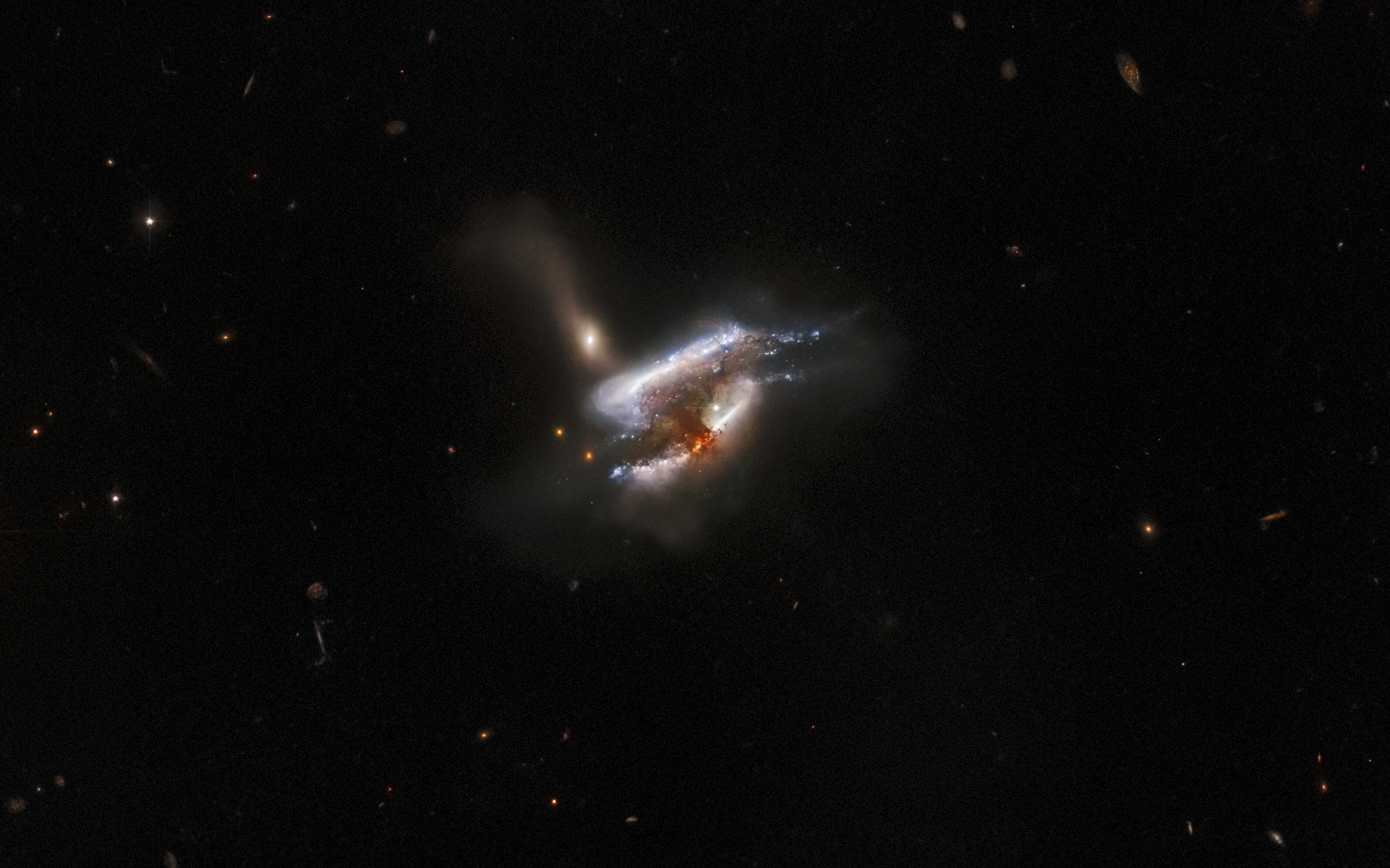
Three distant galaxies collide in a stunning new image captured by NASA's Hubble Space Telescope.
A triple galaxy merger is when three galaxies slowly draw each other closer and tear each other apart with their competing forces. All large galaxies, including our own, owe their size to violent mergers like this one.
The Hubble Space Telescope has the best images of all time.
These mergers are more about creation than destruction. As gas from the three neighboring galaxies collides and condenses, a vast sea of material from which new stars will emerge is assembled at the center of the newly unified galaxy.
Many existing stars are likely to collide because of the tug-of-war among the three galaxies, but they will survive the crash mostly unscathed.
According to NASA, the IC 2431 is located about 681 million light-years from Earth in the constellation Cancer. The merger was discovered by Astronomers thanks to a citizen science project that invited more than 100,000 volunteers to classify images from the Hubble telescope that were never thoroughly examined. The initiative has already resulted in a number of strange and exciting discoveries, like this one, and it was accomplished in 175 days.
Astronomers can better understand the past and future of the Milky Way by studying galactic mergers. Over the past 12 billion years, the Milky Way is thought to have eaten up more than a dozen galaxies.
About 4.5 billion years from now, our galaxy is expected to combine with the nearby Andromeda galaxy. According to NASA, the merger will change the night sky over Earth but will not affect the solar system.
It was originally published on Live Science.